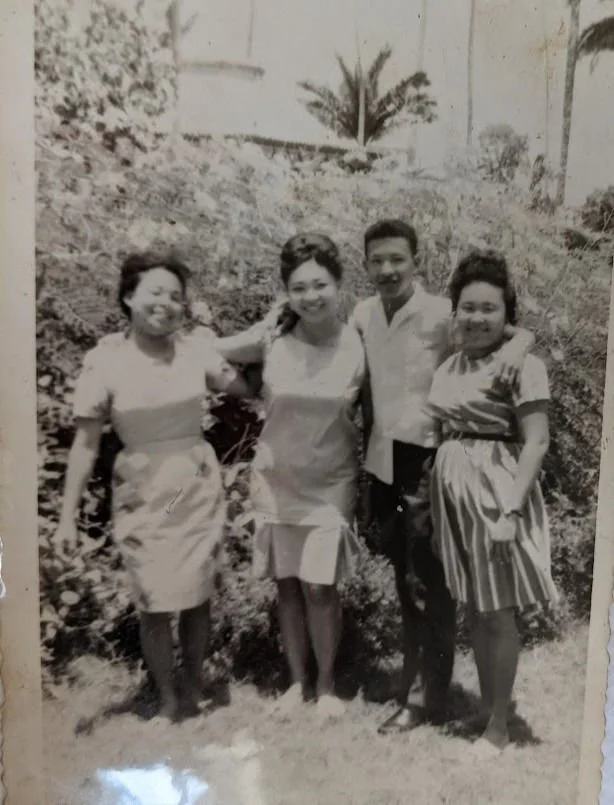Chopsticks, Woks & Dutch Pots: Chinese-Caribbean Fusion in Guyana, Trinidad, and NYC
Today, let’s gather around for a real ancestral talk — not just about the legendary Dutch pot or caldero, but about the legacy of Chinese migration and deep fusion that shapes the soul of Guyanese and Trinidadian cuisine, from South America to Queens, Brooklyn, and beyond.
You ever wake up to the smell of onions browning in an iron pot, green seasoning in the air, and know your day’s about to start off right? Every Caribbean kitchen’s got staples: the Dutch pot for rice and peas, curry goat, or stew chicken ... but in Guyana and Trinidad, these same kitchens are also the birthplace of Chinese-Caribbean classics, made by families with names like Chung, Chin, Ching, Su-ho, and Lee. Our tables — as mixed as our ancestry — prove that “One People, One Nation, One Destiny” is more than a slogan; it’s lived reality.
The Roots: Hardship, Hope, and Arrival
The Chinese journey to Guyana and Trinidad started amidst hardship. Famine, upheaval, and colonization forced thousands to cross the oceans, many as indentured laborers, others fleeing war and imperial oppression. When they touched Caribbean soil, they faced a new kind of struggle — but also found room to reinvent themselves by marrying into Afro-, Indo-, and Indigenous communities, turning adversity into roots and family.
This is how my own Chung family, and countless others, built lives — mixing traditions, languages, and foodways into what we call Caribbean identity. Walk through Little Guyana in NYC’s Richmond Hill, and you’ll see the legacy still thriving — diverse faces, dialects, and meals at every corner.
Fusion at the Fire: Dutch Pots, Calderos, and Woks
Caribbean food embodies adaptation. The Dutch pot is sacred in Jamaican kitchens; the caldero reigns in Puerto Rican and Dominican homes; but in Guyana and Trinidad, the wok and the Dutch pot exist side by side, holding pepperpot and chow mein alike.
Guyanese Chow Mein: Island hot with bora beans, scallion, wiri wiri pepper, and green seasoning — not Chinatown style, but Guyana soul.
Chinese Fried Rice: Cooked with Caribbean aromatics, often paired with pepper sauce, fried chicken, and plantain.
Trinidadian Pepper Shrimp and Stew: The Chinese influence reimagined with red-hot West Indian spices.
Bow (Bao Buns): Filled with jerk pork or Caribbean-seasoned meats, uniquely island in origin.
Fried Chicken: Crisp, garlicky, and always seasoned with a mix of five spice and local herbs.
These dishes live at legendary restaurants in New York: Chef Quang Guyanese Chinese Express (Brooklyn), Kaieteur Express (Queens), and Tropical Jade, hubs for pure Guyanese-Chinese flavor. Trinidadian Chinese can be found alongside doubles and pelau, all side by side with lo mein and pepper shrimp — community and cuisine blending seamlessly.
More Than Flavor: Building Home, Unity, and Legacy
Chinese shopkeepers became pillars in Guyana and Trinidad, opening grocery stores, bakeries, and community restaurants throughout the Caribbean and the diaspora. The food isn’t just delicious — it’s evidence of resilience, adaptation, and creative expression. Intermarriage with Afro-Caribbean, Indo-Caribbean, Indigenous, and even Korean families built an ever-evolving mosaic. That’s why in NYC’s Little Guyana (Queens) and Brooklyn, you find every shade, every tongue, sharing Guyanese pepperpot with Guyanese chow mein on the same table — the real Caribbean story.
My own experience as a chef — and those of my friends from China and the Caribbean — show how flavors travel and twist. Guyanese chow mein surprises Chinese visitors: familiar noodles, but the thyme and green seasoning is pure Guyana. In Trini homes, you’ll taste “Chinese chicken” with a carnival of spices. This is what makes Caribbean fusion legendary — and why we cook with pride and a sense of ancestral ceremony.
Unity in Ancestral Cuisine: More Than a Slogan
There’s a reason Guyana’s motto rings out in every kitchen and family circle: “One People, One Nation, One Destiny.” That’s what you taste when you dig into Guyanese or Trinidadian Chinese food at a family gathering, or when you walk into Kaieteur Express for your Saturday fried rice and chow mein. Our cuisine honors all the hands who came before — whether stirring a Dutch pot, a caldero, or a wok — celebrating unity through flavor, history, and blended heritage.
Even now, Caribbean Chinese restaurants double as gathering places for community, events, and pride — food that binds kin and memory, keeping ancestral fire alive in every bite.
Cooking With Ayana: Where Stories and Flavors Unite
This isn’t just food history. This is a living fusion, blending hardship with hope, tradition with adaptation, ancestry with innovation. To be Guyanese, Trinidadian, Chinese-Caribbean, Blasian, Dougla, or just a lover of flavor is to be a living part of this story.
So next time you’re in Queens or Brooklyn, and the scent of green seasoning and soy sauce wafts out of a Guyanese or Trinidadian Chinese eatery, step inside and taste the legacy — the unity, the resilience, the joyful “mixed-up” heart that makes our Caribbean ancestral. This is Cooking With Ayana: where every meal is an act of memory, every bite a celebration of unity, and every newsletter a love letter to blended roots.













